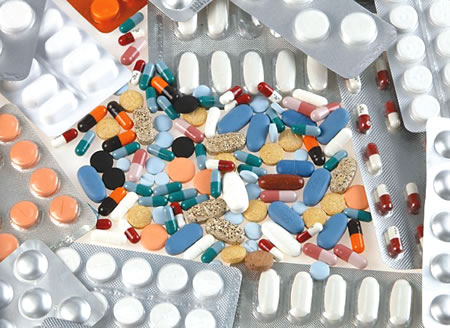Undernourished children are particularly vulnerable to contracting malaria and dying from the disease. In this report by SADE OGUNTOLA, experts say that the most-prescribed antimalarial drug is less effective in severely malnourished children than in those that are adequately nourished.
M ALARIA and malnutrition are both potentially life-threatening conditions and are both most common in young children in sub-Saharan Africa. Children with severe malnutrition have a markedly increased risk of death from infectious diseases, including malaria.
Unfortunately, experts in a study said severely malnourished children are at high risk of contracting malaria and dying from it as they are unable to absorb antimalarial drugs effectively.
Researchers have found that the most-prescribed antimalarial drug is less effective in severely malnourished children than in those that are adequately nourished. Artemether-lumefantrine is the most commonly used antimalarial drug worldwide.
This study is the first to address the challenge of treating malaria specifically in severely malnourished children. It was published in the Clinical Pharmacology and Therapeutics Journal.
The team analysed the absorption of lumefantrine and the effectiveness of artemether-lumefantrine in severely malnourished children with uncomplicated – or not severe – malaria.
The institutions that conducted the new study include the University of Cape Town, Malaria Research and Training Centre in Mali, the Ministry of Health in Niger, Mahidol-Oxford Tropical Medicine Research Unit (MORU), the Médecins Sans Frontières (Doctors Without Borders) and Epicentre Organisation.
Key measures of malnutrition collected include weight-for-height, mid-upper arm circumference or presence of nutritional oedema (a condition characterised by an excess of watery fluid collecting in the feet and extending upwards to other parts of the body).
But so many factors such as the constituent, genetic make-up of the individual and how the drug moves in the body that come to play in determining the workings of any drug, including antimalarial, said Dr Aduragbemi Oladapo, a consultant pharmacologist at the University College Hospital, (UCH), Ibadan.
Dr Oladapo declared that malnourished children don’t have enough plasma protein because they have Protein Energy Malnutrition and so there could be an increase in the amount of free drug that is readily excreted.
Aside from the drug factor, she said a lowered immunity in a malnourished child and other existing infections also affect malaria parasite clearance from the body.
“The body immunity is also supposed to continue with the work of clearing the body of the malaria parasite, but the body immunity of a child with malnutrition is low,” she added.
But, Olugbenga Mokuolu, a Professor of Paediatrics (Neonatologist and Malaria Case Management Expert), College of Health Sciences, University of Ilorin, Ilorin, Kwara State stated that there is no significant difference in the efficacy of the antimalarial drug, whether in a lightweight or a heavyweight child.
The 2018 survey found no difference in terms of time for parasite clearance and the overall sensitivity of the antimalarial in Kano, Enugu and Jos, despite the difference in body weights of participants in the study. Of course, people from Kano were a lighter weight than those from Enugu.
Professor Mokuolu said this survey done every two years, also indicated that artemisinin-based combination therapies (ACTs) are still 97 to 99 per cent effective in the treatment of malaria in Nigeria.
Nonetheless, he added that although a malnourish state is an abnormal state in itself causing a lot of disequilibrium in the body, paradoxically the presence of severe malaria, in particular, is not prevalent in severely malnourished children.
Irrespective of the nutritional status of a child, he stated in the treatment of malaria, children are given a proportionately higher dose of antimalarial than adults to ensure the required peak concentration of the drug in the blood.
The dosage regimens now recommended for children is to increase the chances that treatment will not fail since they require a higher dose to ensure the required peak the concentration of the drug in the blood.
Professor Karen Barnes from the University of Cape Town’s (UCT) Division of Clinical Pharmacology stated that the study highlights how important it is to make sure that optimised drug doses are developed for undernourished children and other vulnerable groups – such as pregnant women – who are usually excluded from studies to decide treatment doses.
Professor Joel Tarning, head of WWARN Pharmacometrics, which led the study with numerous collaborators, said: “There are serious knowledge gaps in associations between malnutrition and antimalarial drug efficacy and this study provide key insights.”
The researchers had looked at data for 399 children (all with malaria, 131 of them severely malnourished) involved in a clinical trial at two hospitals in Mali and Niger.
They also wanted to understand how malnutrition might further compromise this treatment as well as test whether the current treatment is effective for malnourished children.
To evaluate three alternative dosing regimens, the researchers used a model they had developed to see if they could improve lumefantrine exposure among severely malnourished children. Standard treatment involves administering the drug twice a day for three days.
The results showed that not only were the levels of lumefantrine lower in children’s blood compared to adults’, but that among severely malnourished children there was even less of the drug.
Among severely malnourished children there was even less of the drug – about 19% less – than in other children. This lower exposure also meant these children acquired new malaria infections sooner.
The model showed that increasing the dosage would not result in increased exposure, because of the limited ability of severely malnourished children to absorb the drug.
However, both the intensified regimen (three times a day for three days) and an extended regimen (twice a day for five days) brought the exposure up to levels similar to those in the other children.
The study calls for further research into optimising treatment for undernourished children – who are particularly vulnerable to contracting malaria and dying from the disease.
Paradoxically severe malaria, in particular, is not prevalent in severely malnourished children. Also, malnutrition does not increase susceptibility to severe falciparum malaria.
In fact, it has been observed that well-nourished children are more likely to develop severe disease than those with malnutrition. However, when severe malaria does occur, malnourished children have higher disease-related suffering and death.
Although one in three children under five years old in sub-Saharan Africa is malnourished, they are usually excluded from studies on malaria treatment.
Malaria and malnutrition is a bad combination. Young children are particularly vulnerable to malaria infection; 61 per cent of those who die from malaria worldwide is less than five years old. Young children who are malnourished are at an even higher risk of contracting the disease and dying from it.
Sub-Saharan Africa – where one in three young children is malnourished – also sees more than 90% of the world’s malaria cases and deaths.
The physiology of malnourished children, which is different from that of adequately-nourished children may change the way antimalarial drugs are taken up and distributed by their bodies.
Malnutrition could, for instance, reduce the absorption of drugs in children, but there has been little research into how well the treatments work for them. The information available seems to be contradictory.
YOU SHOULD NOT MISS THESE HEADLINES FROM NIGERIAN TRIBUNE
Buy and read digital replicas of your TRIBUNE titles by subscribing through E-VENDING
BREAKING: No Fresh Probe Of Adesina ―AfDB Board Rules
The Bureau of the Board of Governors of African Development Bank (AfDB) on Thursday foreclosed the possibility of reopening the probe of the bank’s President, Dr Akinwumi Adesina. At a meeting, the body declared that an independent investigation was not required as demanded the United States of America… Read full story
NCDC Releases New Guidelines On COVID-19 Patients’ Treatment, Discharge
The Nigeria Centre for Disease Control (NCDC) on Thursday announced a new case management guidelines for the treatment and discharge of COVID-19 pandemic patients. Its Director-General, Dr Chikwe Ihekweazu, made this known at the Presidential Task Force on COVID-19 (PTF) media briefing in Abuja… Read full story
UN Puts Nigeria’s Electricity Access Rate At 57%
No fewer than 110.7 million Nigerians out of a 195.8 million estimated population had access to electricity as of 2018, according to the latest global energy progress report. This represents a 57 per cent national electricity access rate compared with the global average of 90 per cent, says the report launched at the… Read full story
Akinwumi Adesina And AfDB
AFTER the Ethics Committee of the African Development Bank (AfDB) had returned a ‘not guilty’ verdict on the bank’s president, Dr. Akinwumi Adesina, who had been accused by a group of whistleblowers of approving certain appointments and contracts that were in breach of the financial institution’s statutory and… Read full story
COVID-19: Nigeria Records 350 New Cases, Total Now 11,516
The Nigeria Centre for Disease Control (NCDC) has confirmed 350 new cases of COVID-19 in the country, bringing the total number of confirmed cases to 11,516. The centre disclosed this on Tuesday night via its… Read full story
COVID-19: African Nations Get $9.8bn As IMF Supports 66 Countries With $23bn
The International Monetary Fund (IMF) has provided over $23 billion in emergency financial assistance and debt relief to 66 member countries facing the economic impact of the coronavirus pandemic. According to information sourced from IMF’s website on Thursday, sub-Saharan Africa got the highest support of $9.81 billion… Read full story
Osun Relaxes Curfew, Now 9pm To 5am
The governor of Osun State, Mr Adegboyega Oyetola, on Thursday, announced a new set of guidelines that would guide the second phase of the gradual reopening of the state’s economy, following the lockdown imposed by the government in the wake of the COVID-19 pandemic… Read full story
COVID-19: Nigeria Experiencing Steady Rise In Maternal, Child Mortality ― PTF
The Presidential Task Force (PTF) on COVID-19, on Thursday, lamented that the country is experiencing a steady rise in maternal and child mortality as a result of disrupted essential services, due to the COVID-19 pandemic… Read full story
Through Facebook, Three Brothers Kidnap, Murder 55-Yr-Old Mother Of Five Children
Three brothers of one Emmanuel family, Johnson, Gideon and Success, have been arrested by the police for the kidnap and murder of one Mrs Janet Ogbonnaya. One of the three brothers, Johnson Emmanuel, had lured the woman, a mother of five children, via Facebook from her Gwagwalada home where they allegedly… Read full story
Police Give Account Of How 21 People Were Killed In 2 LGs In Zamfara
Zamfara State police command has said 21 people were killed in attacks carried out in two local government areas of the state. This was contained in a statement signed by the police image-maker… Read full story




